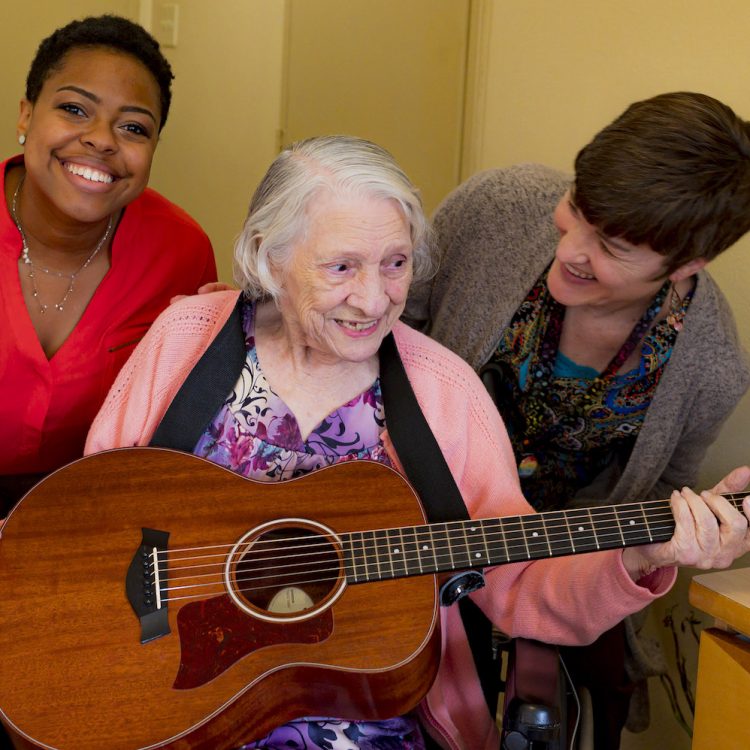One of the many therapies offered by the Visiting Nurse Association Hospice Care is music therapy. Music therapy uses various kinds of music to bring peace, comfort and overall wellbeing to patients and families. It is the purposeful use of music along with the relationship formed between a patient and therapist that helps patients process, cope with, and understand their present circumstances.
VNA’s hospice care teams use music therapy as a valuable tool in achieving the mission of hospice: to help our patients retain dignity and control at the end of life. Music therapy uses music to help ease a person’s physical and emotional pain. It can also offer benefits for the bereavement process by helping the patient’s loved ones manage the burden of grief before and after the patient passes away.
Music therapy sessions are most effective when conducted by board-certified music therapists with an MT-BC designation. Board-certified therapists meet the latest standards of practice and must maintain the clinical skills and abilities necessary to effectively and professionally treat patients.
In these special visits with hospice patients, the music therapist provides music as a catalyst for sharing memories and processing life changes. It is for this reason that music therapy has also been proven valuable for working with Alzheimer’s and dementia patients.
There is no typical music therapy session. As each patient is unique, the course of each session is personalized based on the needs and abilities of the patient. The session may involve composing a new song, singing old favorites or even improvising new music with an instrument. Music is used as a tool to facilitate wellness in a target area such as mental, physical, spiritual, emotional or cognitive functioning.
Sometimes music therapy requires no active participation by the patient. A patient may sit and listen to the music the therapist provides as a means for relaxation, to help establish a regular respiration rate or to alleviate restlessness. A music therapy session can be as active or passive as the patient’s abilities allow, but he/she can still be involved in and benefit from the therapy.
